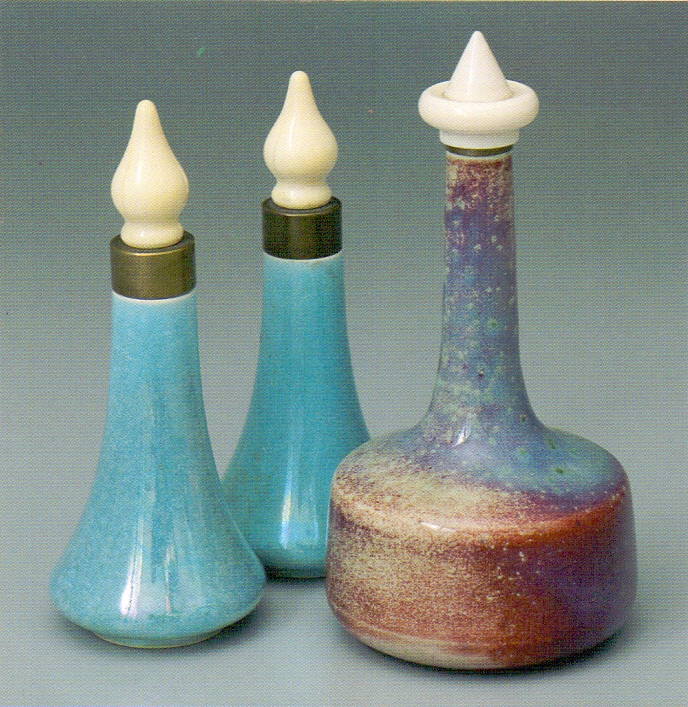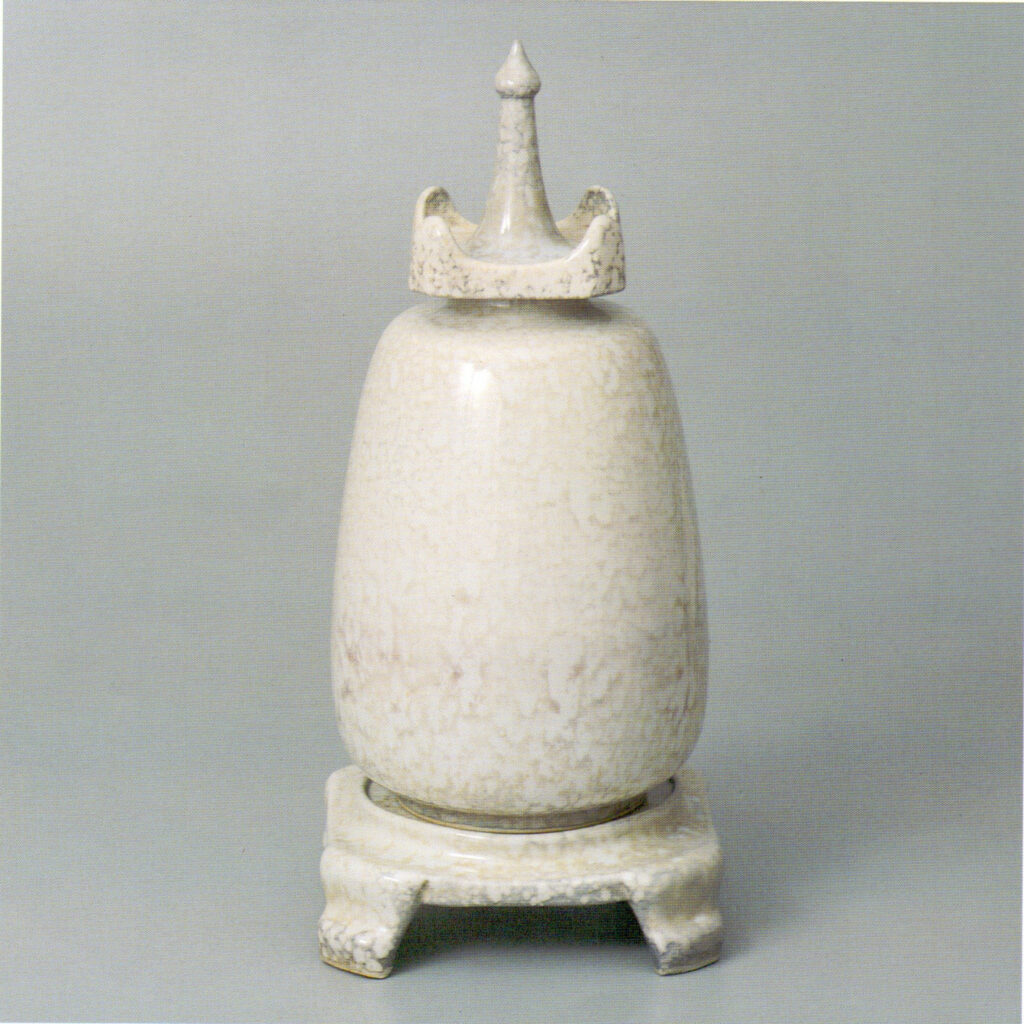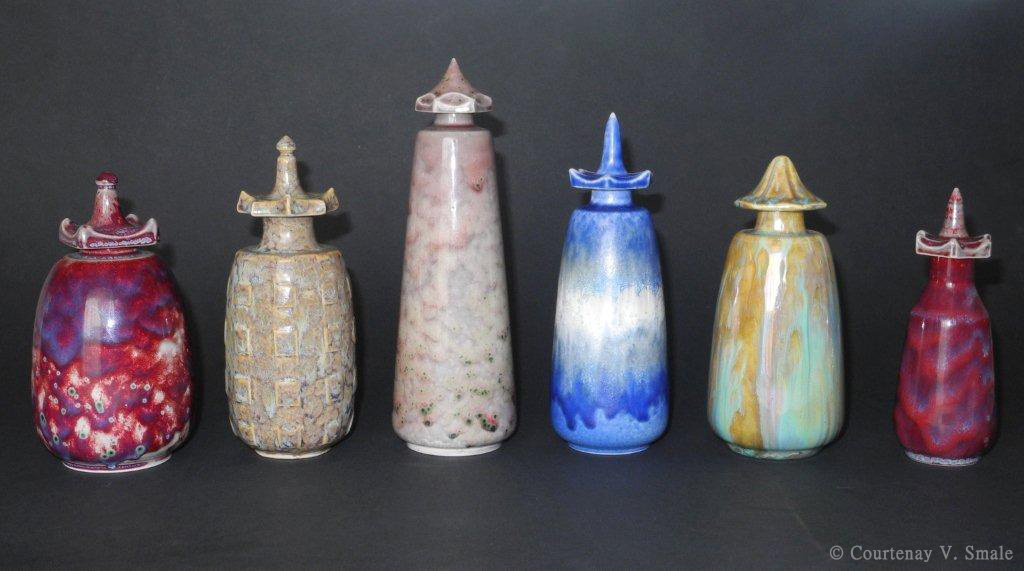Scent For A Woman
Scent Bottle Production at the Factory
The Ruskin Pottery made scent bottles from its early years when three designed for metal mounting were illustrated in their 1905 catalogue usually soufflé in glaze. A small number of lustre items date to the First World War period. The main production was in the 1920s with a few square bottles produced towards the end of the pottery’s life.
Originally attributed to William Nixon, the head turner, in earlier literature on the Pottery, it now appears highly unlikely that he was instrumental in the making of the bottles. Of the seventy or so bottles recorded to date a mere three examples bear impressed marks for 1926. The majority depict impressed marks for RUSKIN ENGLAND 1927 with about a dozen showing RUSKIN ENGLAND only. It may well be that the lack of any date implies that they were made in 1928-1929.
William Nixon died on 9th February 1927 from pulmonary tuberculosis which virtually rules him out as the maker. The most likely exponent is Andrew Forrester, a thrower/turner and modeller at the Pottery.
The sample of bottles recorded shows that there were six basic shapes and sizes used. For comparison, these may be described as small (13-14cm), medium (15-17cm), tall (19-20cm), fat (14-15cm), ‘grenade-shape’ (15-16cm), and ultra large (30cm). Most common are the small and medium bottles, followed by the ‘grenade-shape’, and then the tall ones. Less common are the fat bottles, numbering just nine, and even scarcer, the ultra large bottles of which a mere three are recorded. Considering their size and drop-in stoppers rather than screw tops, it suggests that the latter were made for the decorative art pottery market. The variation in overall height in the groups listed above is not so much due to the body of the bottle, but to the differing styles of stopper used, ranging from tall spires, through medium bun-topped finials in square, hexagonal and octagonal forms, to coolie hats.
Glaze styles are covered by just three formats. By far and away the most commonly used were the high-fired reduction glazes. Matt/crystalline glazes are to be found in all of the sizes and shapes with the exception of the small bottles, and lustre glazes only in the medium height bottles.
Technically, the Ruskin Scent Bottles were a masterpiece in execution. The challenge of making a close-fitting screw thread, bearing in mind the variation in contraction between the bottle and the stopper during the firing process, was indeed a daunting one. That no other potteries at the time attempted such a feat speaks volumes of the Ruskin Pottery’s preparedness to take on new challenges.
The scent bottles were never decorated but one singularly unique example in the ‘grenade-shape’ style, dated 1926, exists in a mottled buff glaze over a deep liver-red and purple ground portraying eight vertical rows around the body of the bottle, each row comprising four squares of 1cm x 1cm in relief.
Ruskin scent bottles display well on low stands despite the lack of evidence to suggest that stands and bottles were fired together with matching glazes.
Research into the scent bottles clearly demonstrates that many of them were made and given to members of the Taylor family and close associates. However, a small sample of surviving receipts from the Pottery in 1928 and 1929 show that a number were retailed at prices between 7 shillings and 6 pence and 15 shillings, these being subject to a one third discount for prompt payment!
Courtenay V Smale, February 2016




